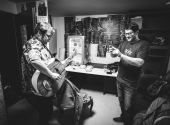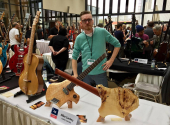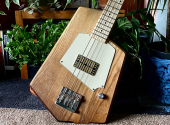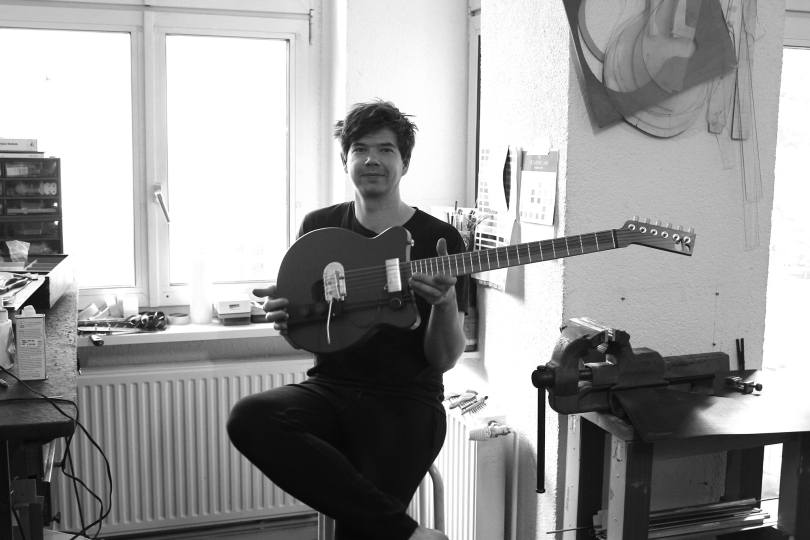
Dreamstruments #23: Schorr Guitars
Berlin-based luthier Nicolai Schorr makes guitars that do not fundamentally resemble any other brands. Without exaggeration, his attitude could be called anachronistic. Despite that his designs exude certain futurism that is not common in the guitar world, when building his instruments, Nicolai relies on hand tools and traditional procedures. He also works almost exclusively with his own hardware. A certain peculiarity of his instruments, which stems from this strict philosophy, only adds to their quality and ensures that they are instantly recognizable.
Berlin. A city that, back when the Iron Curtain ran through its centre, became a romanticised haven for fashion oddballs and eccentrics, but also outcasts and renegades. Decades later when David Bowie and Iggy Pop took refuge in the western part of the German metropolis, the city, and especially its Kreuzberg district, became one of the epicentres that gave new life to the word 'hipster'.
While bearded men in woollen hats began to spread around the world and, thanks to their 'uniform otherness', gave rise to the negative connotations that the word now carries, its original bearers continued to do what they did best: stand outside the mainstream (both in fashion and thought) and turn their vision into reality while gentrification raged around them.
From the dump to the exhibition
The author of this article cannot guarantee that Nicolai Schorr was one of the "urhipsters". There is not even a guarantee that he would not have protested against this term. However, in 2011, when this cultural concept had already spread across Europe, Nicolai's desire to create his own guitar was awakened.
"In my early twenties, I started going to flea markets almost every Sunday and sometimes came across interesting guitars for cheap. They usually had issues, and those issues were usually worse than they had looked when I had first inspected them, but I guess I realised that guitars break and that they have to get repaired," Nicolai recalls. "When my partner and I moved to Berlin in 2011, I got into repair work at a local guitar shop."
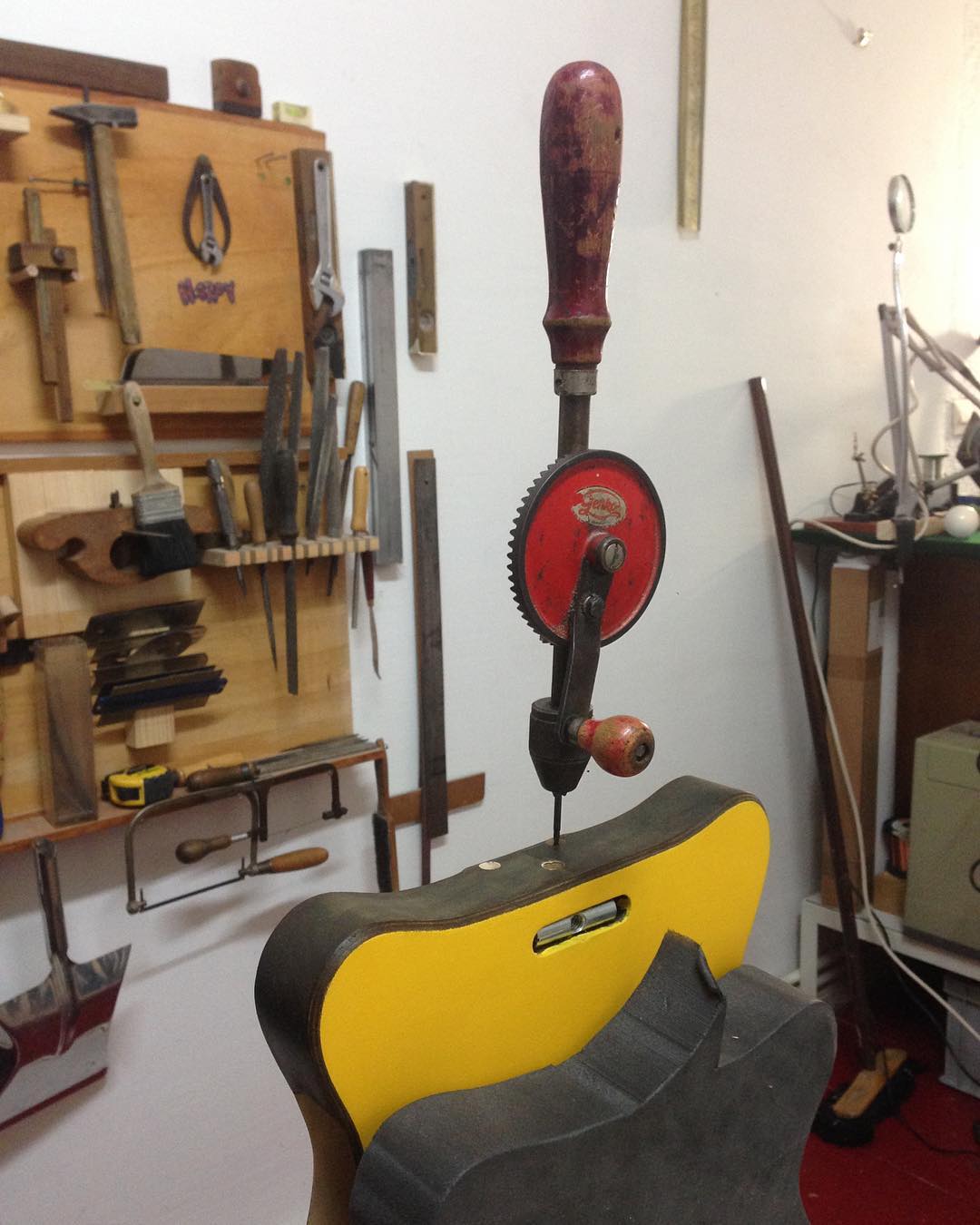
Nicolai didn't have any demands on tools, in fact, he learned the whole process of making and repairing instruments partly on YouTube, partly on the fly, so to speak. Another influence on his "outdated methods" was his apprenticeship with Angela Waltner, a classical guitar maker. "The work you do is generally more than half of the time you are not sleeping, so I try to spend it in a way that I like. I hardly use power tools because I spend a lot of time building guitars, and I don’t want to spend my time wearing hearing and breathing protection, worrying if I will still have all my fingers at the end of the day," Nicolai clarifies for Home of Tone.
Maybe it's the Berlin air, maybe it's the kind of people Berlin attracts, but Nicolai got most of his tools from the place where his guitar-building obsession also came to fruition – he bought his first tools at flea markets, he found his workbench and other workshop furniture, as well as his first wood for building guitars, in the street.
Here an owl, there an owl
The range of instruments Schorr Guitars offer is simple enough at first glance. The Owl, The Owl bass, The Owl The Owl... Well, it's not the clearest presentation, but Nicolaie seems to enjoy it that way. In an interview with Guitar.com, he was effusive in his praise for how straightforward his nomenclature is: three 'Owl' models, complemented by the Future and Ooloi series.
The problem arises when you need to describe each series a little more closely. The Owl, the oldest model still offered by Schorr, is essentially a traditional semi-hollow guitar, but with no sound holes and a very specific neck design. It is neither glued into the body, nor embedded, nor bolted on as in Fender and other guitars. Nicolai explains that he was inspired by the acoustic guitars that Howe Orme was building in Chicago around the turn of the 19th century, and by the evolution of Rick Turner.
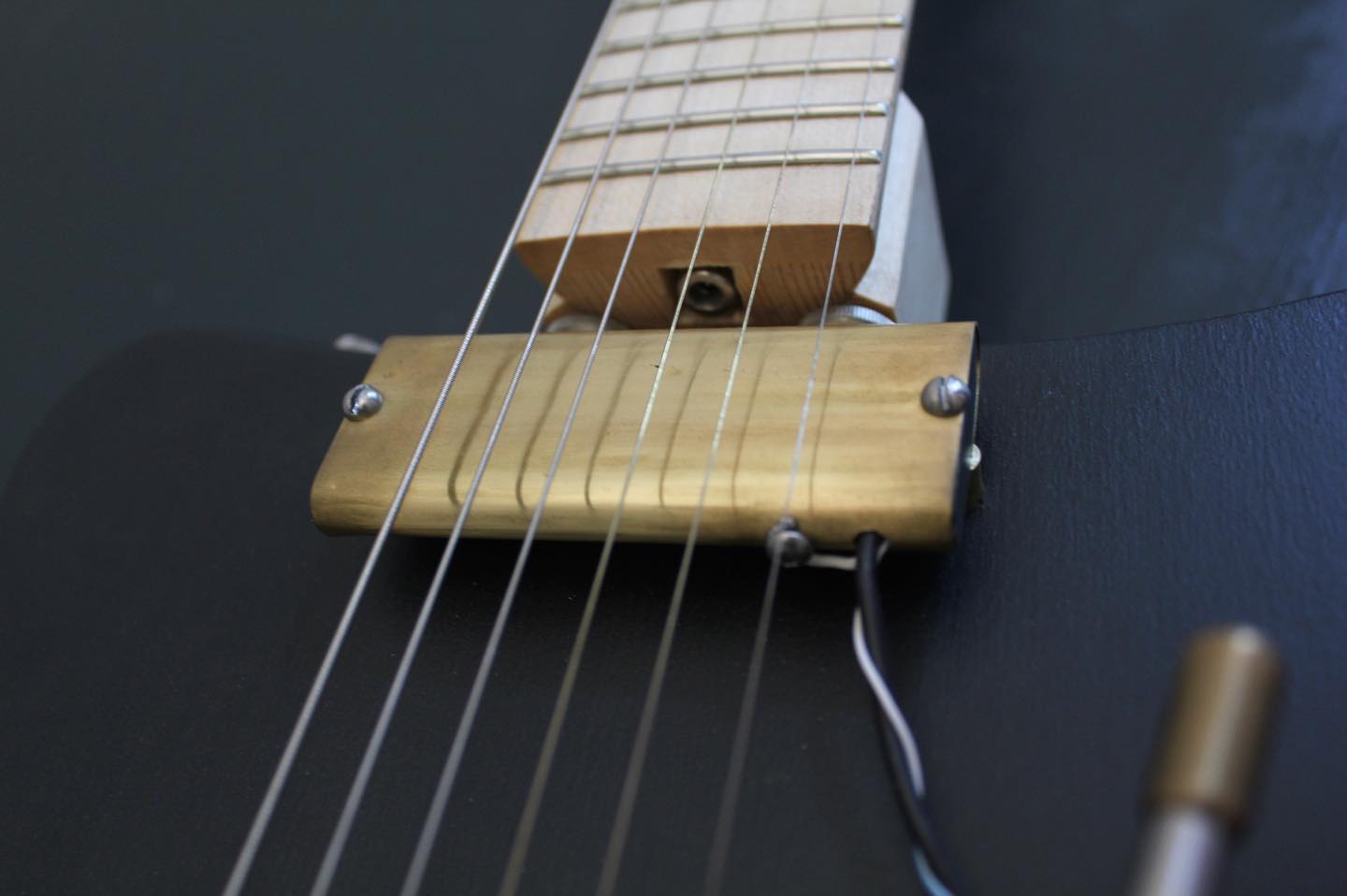
That being said, all the hardware except for the tuning mechanics is hand-made by Nicolai Schorr. His reasoning is pretty ironclad: " I usually feel like I am cheating when I don’t make something myself. It is important to me to feel like the 'author' of the instrument. This entails not only the creation of the bridge or the pickups but also, for example, their mounting. At first glance, this is reminiscent of the floating DeArmond pickups from the old amplification days of semi-hollow guitars. There's a good reason for that, too." Remember Nicolai's walks around flea markets? The broken guitars he found there were not infrequently German-made semi-hollows that mimicked these very amplification methods.
Owl2
The Owl The Owl further develops the idea of the semihollow. Instead of sound holes on the top board, it has "split" sides. This airy design combines the light weight of semihollow guitars with the foldability of traditional electrics, yet still holds the "air-bending" ability that guitarists appreciate and that comes through in the character of the sound.
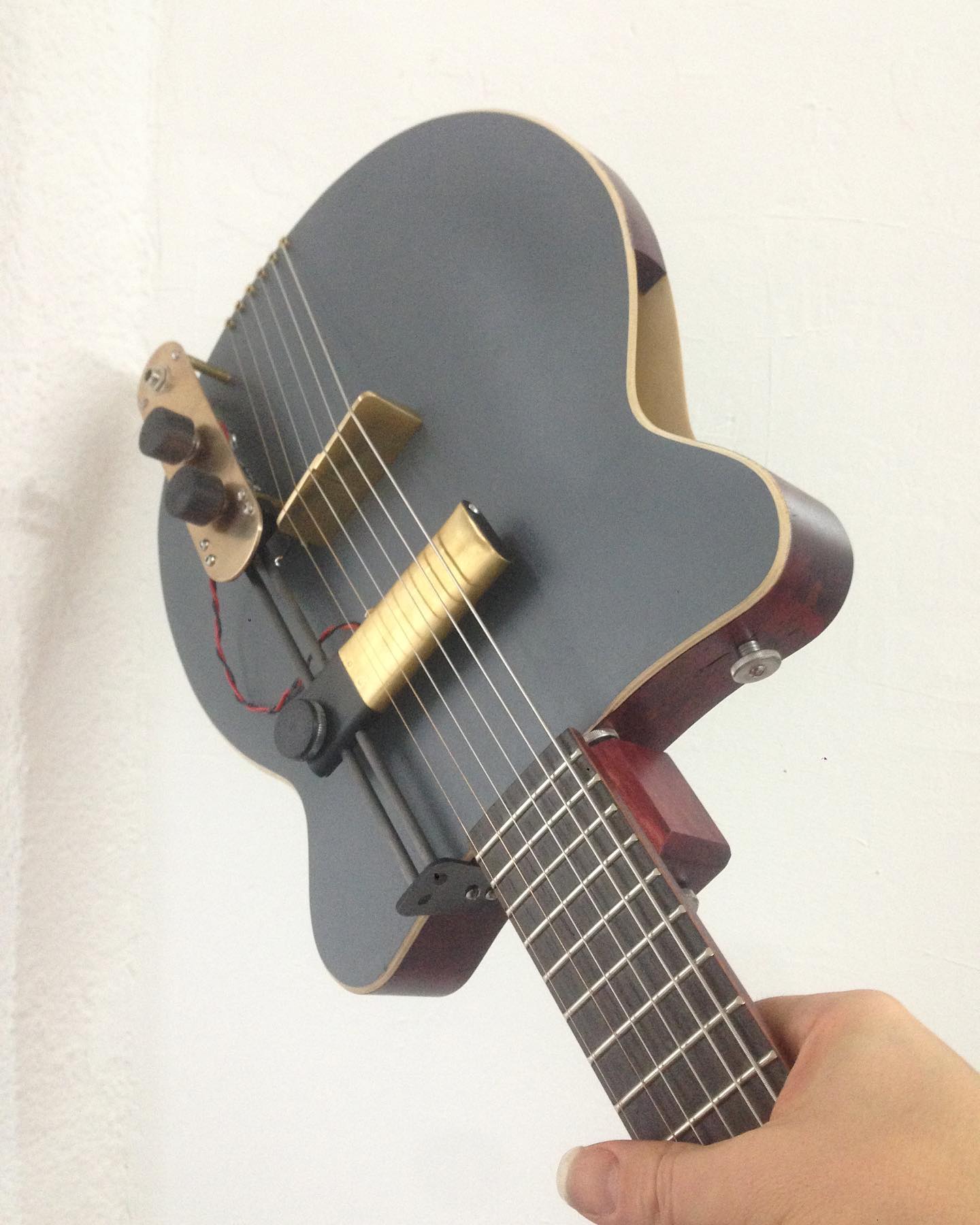
The future of Schorr?
The latest model in Nicolai's offer is also probably the most interesting one. The Future model is an evolution of The Owl The Owl, a guitar without fixed sides but with a more modern shape. Nicolai describes it as a big and light jazz guitar, built like a ship or a whale. If you have little idea of what that description means, know that at first glance the Future looks like a combination of Music Man's signature St. Vincent guitar, a classical guitar and perhaps a lute... or maybe another renaissance instrument? In Nicolai's lineup of instruments, you can clearly see the progression in this model, as well as whereto this progressive luthier's mind is going.

The Future is the furthest Nicolai Schorr's vision has got so far, as the latest Ooloi model goes in the opposite direction, a sort of simplified take on The Owl guitar. The future of what makes Schorr Guitars so unique will probably be closer to the design of the Future semihollow "with no sides".
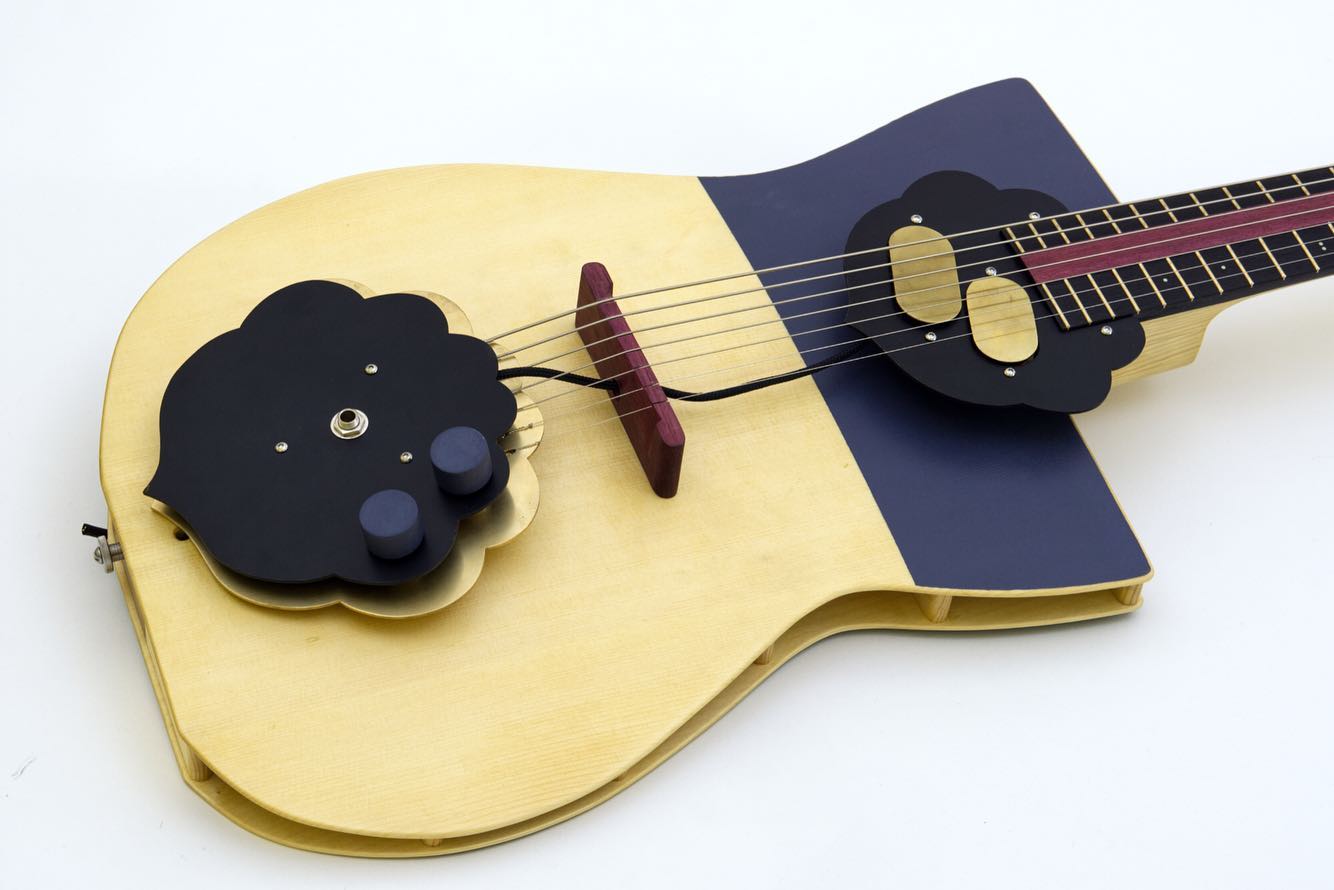
Traditional craftsmanship calls for traditional materials
Don't look for Okoumé, Wenge or other exotic woods on Schorr guitars. Maple, spruce, cedar, and possibly oak or plum are the main materials Nicolai uses to make his instruments. There is no cheap pretence here, nor is there any attempt to save the world with a "locally sourced" label. As with everything in his work, Nicolai's choice of woods comes very naturally – partly informed by his work on classical guitars, partly based on the need to replace "CITES wood" with something more freely available.
The future?
The days when Nicolai worked at the bar in Berlin are over, at least for a while. His calendar is full of orders. Given the originality that his instruments possess, it's no wonder they have earned such interest. Nor is it surprising that he has earned the respect of other luthiers. Nicolai has worked with several names we've covered in this series, be it Deimel Guitarworks, Verso Instruments or Florian Bouyou and his Millimetric Instruments. Instruments from the series of The Owl, The Owl The Owl and The Future only prove that the alternative guitar-making scene, beyond the paths already trodden half a century ago, has much to offer and that there is still room for innovation in the field of instrument making.
If you have found an error or typo in the article, please let us know by e-mail info@insounder.org.


